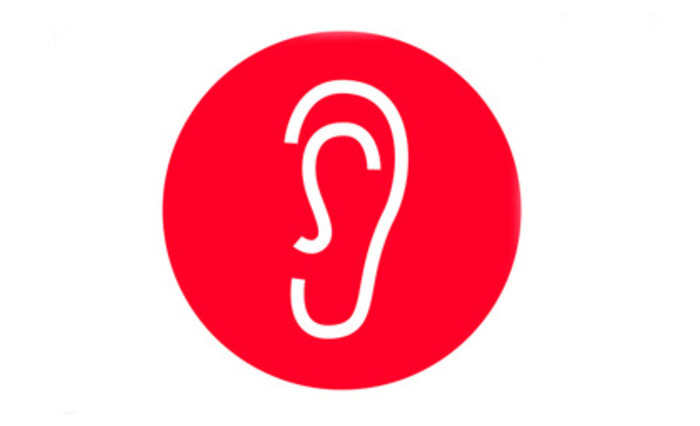
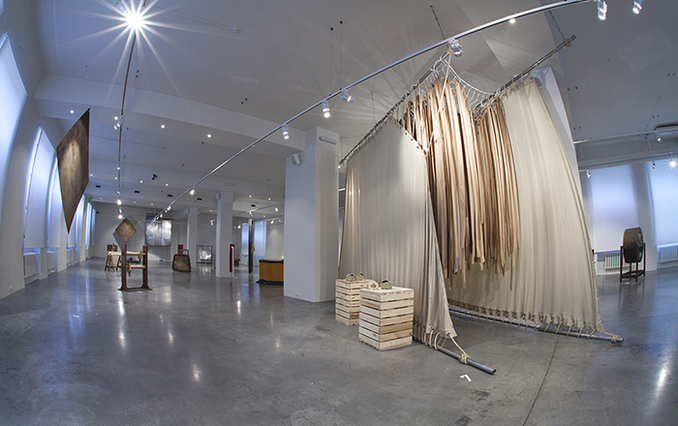
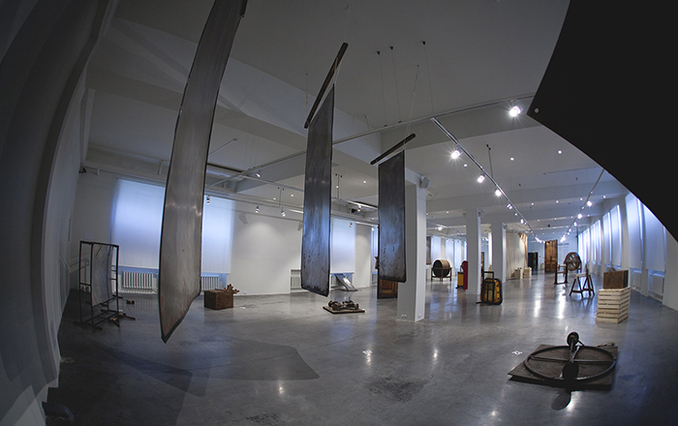
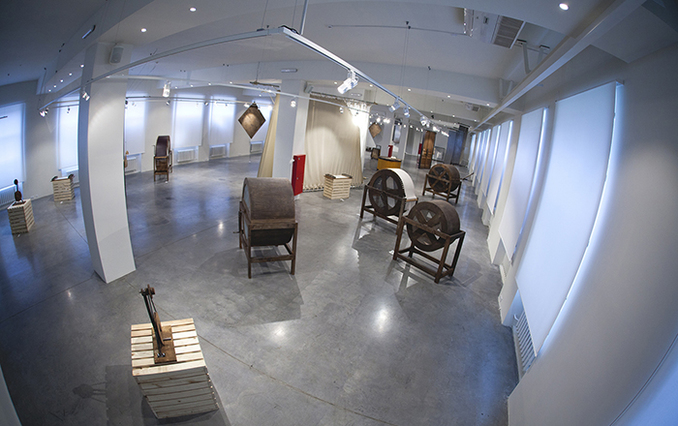
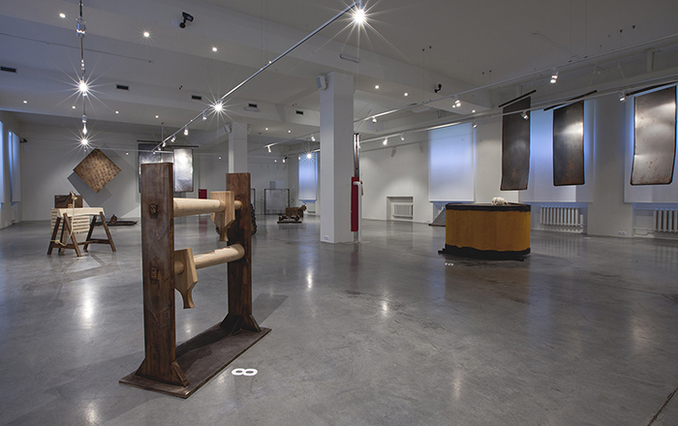
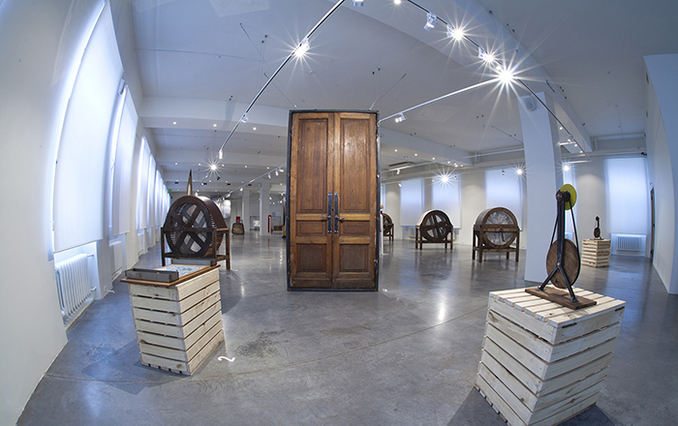
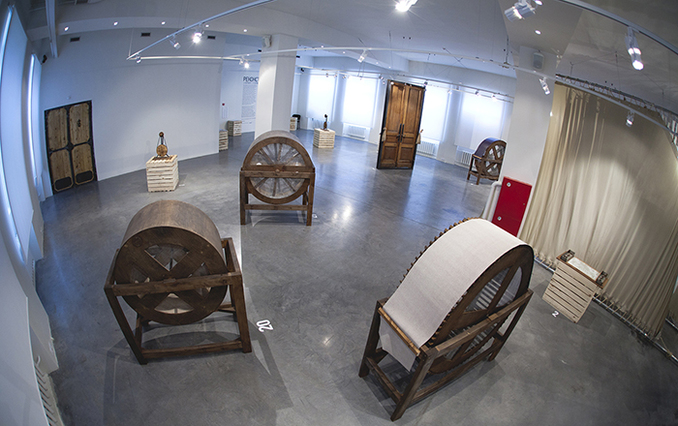
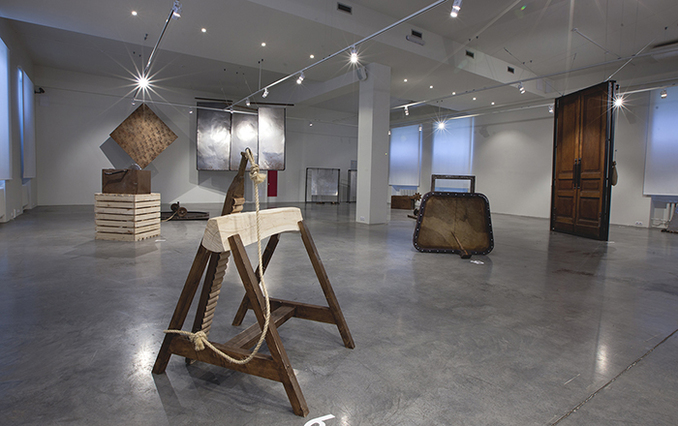
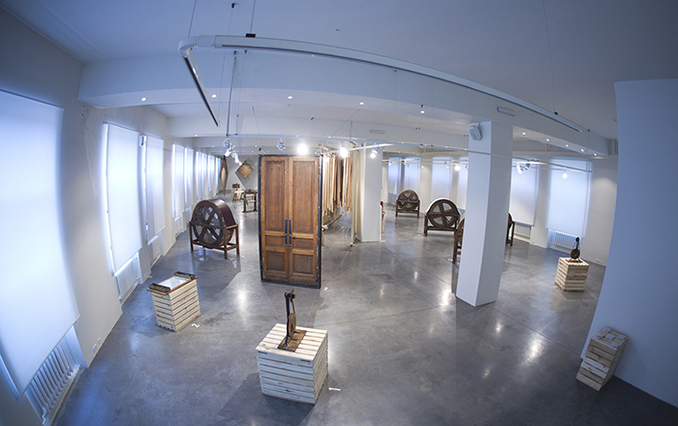
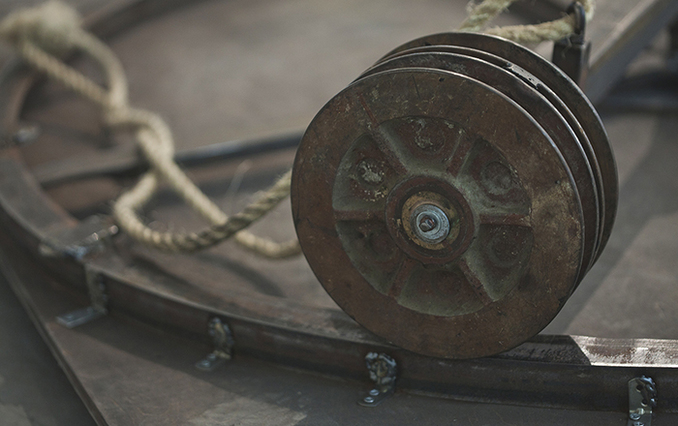
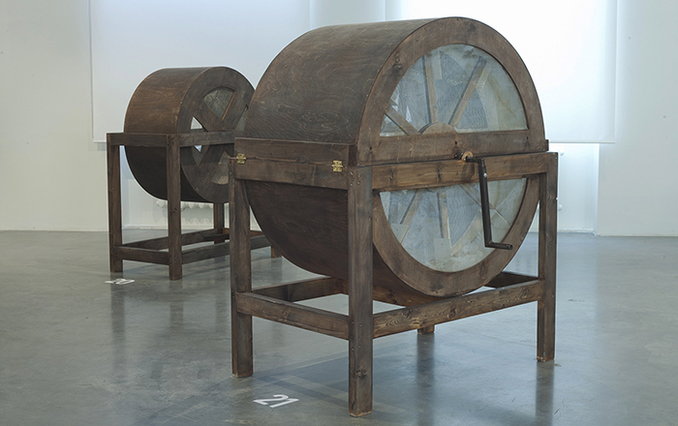
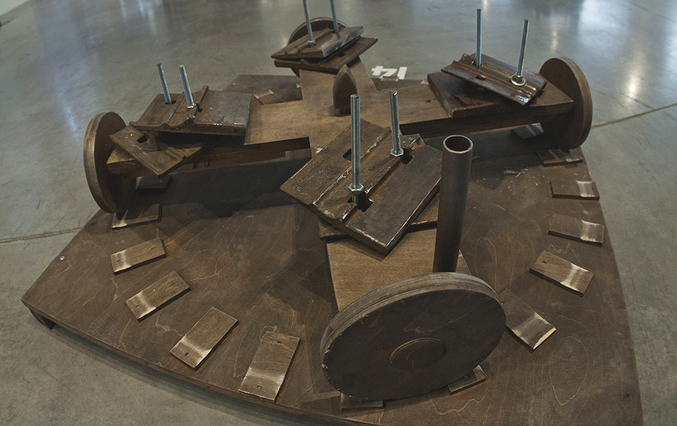
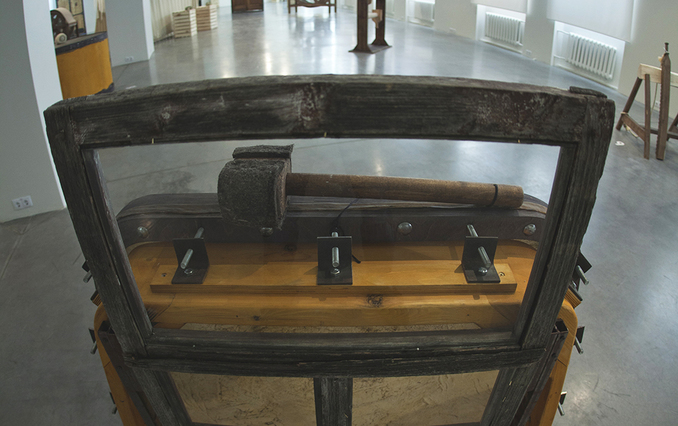
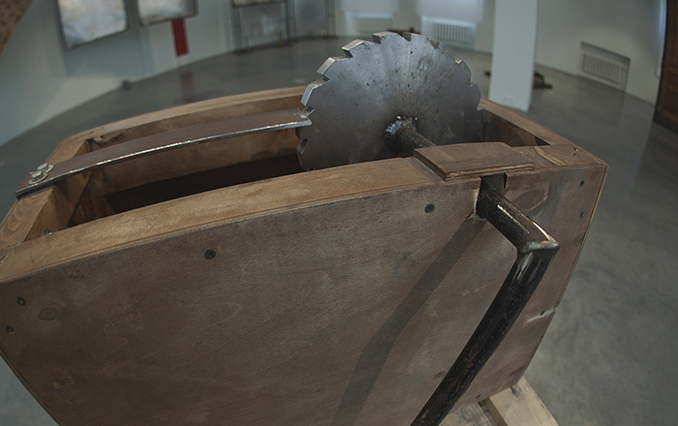
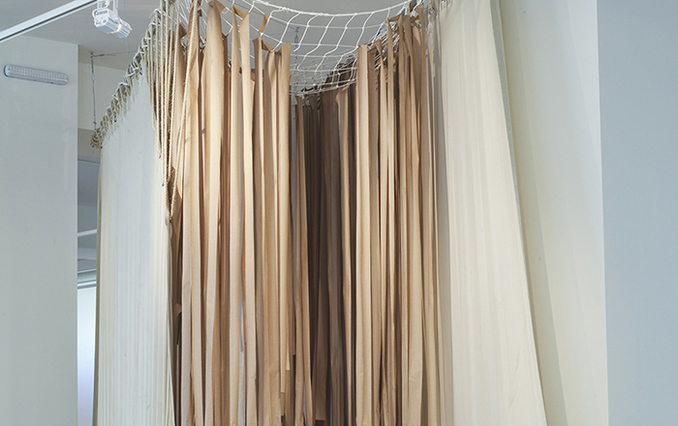
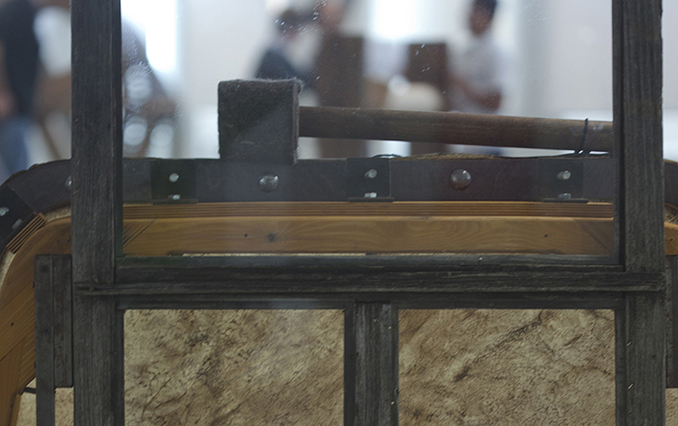
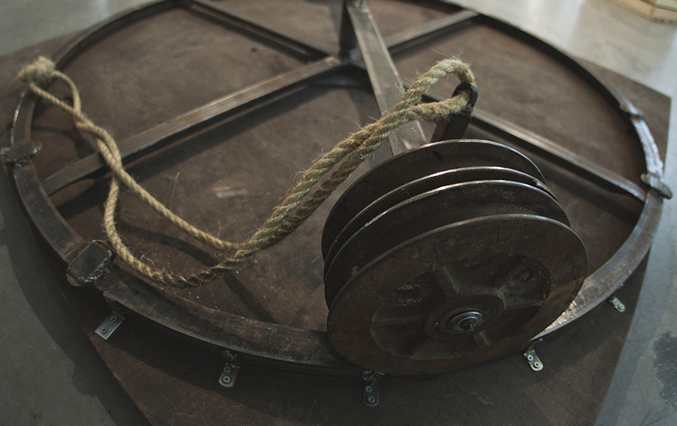
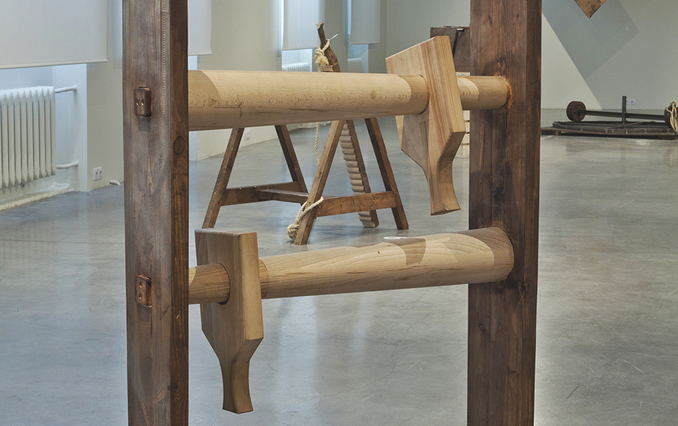
“The Reconstruction of Noise” proposes a scientific reconstruction of the sound machines developed in the first half of the 20th century for the acoustic design of theatre sets, radio-broadcasts, and the first “talking” films. The exhibition presents sound installations based on scetches from avant-garde era, as well as new objects developed especially for Vladivostok’s collective Music Labratory by composer Petr Aidu. Through the interactive space of this “theatre of sound,” each visitor can attempt to replicate the noise experiments of the avant-garde or to devise a new symphony of noise, using sound samples from storms, rain, thunder, horse-drawn carriages, machine gun fire, cricket song, grasshopper chirping, creaks of attics, flapping sails, and other natural, military or industrial sounds.
Traditionally, European culture has held music and noise in oppostion to one another, like order and harmony against chaos and discord. It was only in the 20th century – when man’s daily life became filled with an enormous assortment of diverse, new, unexpectedly-powerful and expressive volumes and noises – that sound was recognized as having its own artistic merit. The history of noise stretches like a new language of sound, from the Futurists, Satie and Cage, up to industrial, techno, and contemporary sound-art. Russian artists, directors and musicians were at the vanguard of this process; Abraamov, Kamensky, Eisenstein, and Vertov may have been a few notable examples, but among their ranks were also lesser known, but more experienced researchers, the inventors of sound machines. Recognizing sound as an important element of a dramatic play, A. Petrov, V. Popov, G. Volynets, and other designers, and often even theatrical performers in their most basic incarnation, created an entire sound ensemble, capable of realistically conveying a variety of sound effects. These experiments would cease with the arrival of cinema into the theatre.
Today, thanks to participants from the Music Labratory, a rich palette of acoustic sounds can be studied in direct interaction with the reconstruction of the sound machines of the early-to-mid-20th Centry. The installations created for this project are called to life as instruments for active participation with the audience-listener, responding to different types and combinations of sound. Demonstrations of these sound machines in the exhibition space reveal their unexpected artistic potential; inside the exhibition, each device becomes a kind of contemporary sound sculpture, while topographically, the layout of the objects echoes the enviroment of a sound laboratory. In this way, what was intended for the theatrical/cinematic stages of the last century now generates a new context for the dramaturgy of sound in space. “The Reconstruction of Noise” presents a total sound installation, in a space where every visitor has the ability to create their own sound environment, to find an accompaniment to the natural poetry in the industrial landscape, and to hear over the creaking of an entrance way the sound of gun-fire and the clanking of tanks.
Petr Aidu, artist and project director
Evgenia Vorobyeva, producer
Elizaveta Ravdel, exhibition architect
Konstantin Dudakov-Kashuro, co-creator and research consultant